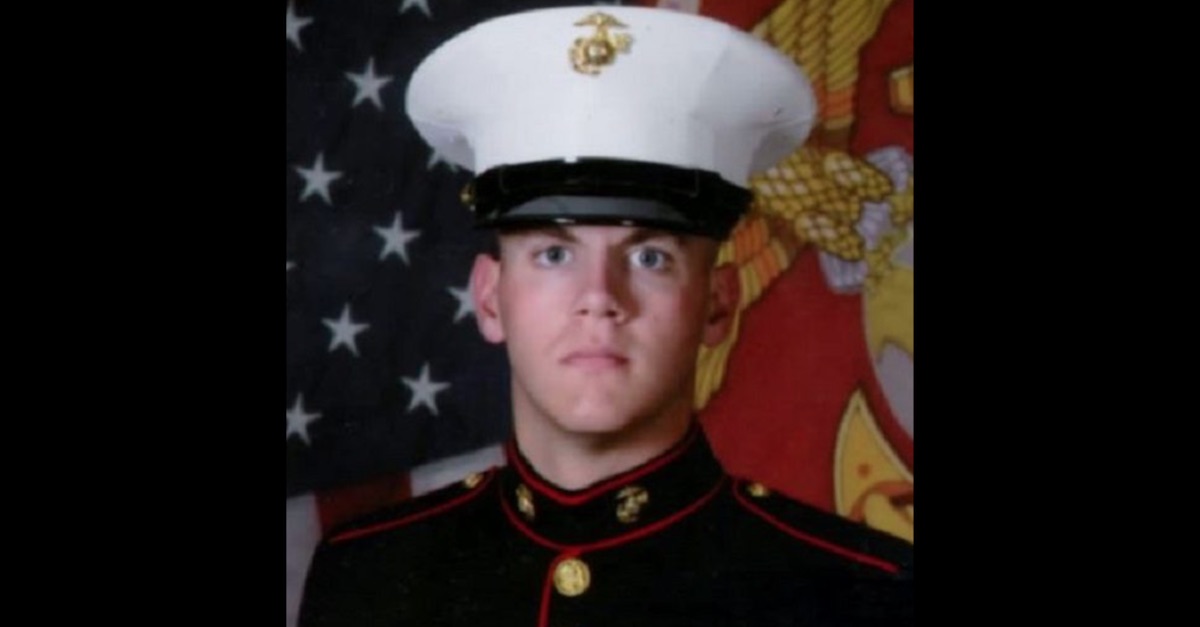
Testimony is slowly tightening the link between two defendants and the murder of a U.S. Marine in Kentucky.
Cpl. Jonathan Price, 26, was shot in the heart and died in a bar parking lot as he defended his wife, Megan, from two robbers who were demanding money from the couple. The Prices were outside the bar waiting for friends to arrive. It was Megan Price’s birthday, so the couple had agreed to join friends to celebrate. Quincinio Canada and Dawan Mulazim are accused of committing the crime.
While waiting, Megan Price testified two African-American men approached her, demanded money, and tried to aggressively get her purse. Her husband, Jonathan, fought back. He was shot while he and one of the suspects were scuffling on the ground. Megan Price was shot in the leg. The bullet shattered a bone. She spent seven weeks in a wheel chair recovering.
Megan Price said she could not definitively point out her attackers in a photo array. She testified that she did not want to be responsible for choosing the wrong people. Testimony on Monday sought to narrow the link between the crime and two men accused of committing it.
Early in the day, police investigators testified that they did not recover fingerprints from shell casings. This is not a surprise given the heat produced by ignition of gunpowder, which in turn causes the casing to expand, testimony revealed. It was also said that bedding was not tested for fingerprints because fingerprints do not stick to bedding. The testimony was likely designed to refute claims by the defense that not enough forensic tests were ordered by the police.
Other police witnesses tried to explain unknown DNA on Jonathan Price’s hands — another problem for the prosecution — and the inability of tracking dogs to pick up the scents of the assailants.
Cell phone experts testified that the defendants’ phones were picked up by towers in the area and were probably close to those towers. The defense suggested several scenarios where the phones could have been further away, but the cell phone experts considered that unlikely.
A former girlfriend to one of the defendants testified that both of the defendants used to borrow her car. Later, a forensic video analyst walked jurors through footage from a nearby drive-thru liquor store which showed the car said to have been borrowed by the defendants pulling up to the window and making a purchase. The license plate was visible in the recording. The liquor store was approximately a one-minute walk from the site of the shooting, and the drive-thru recording was made about thirteen minutes before Megan Price dialed 911 to report the attack.
The same analyst walked jurors through a second surveillance recording from another business, a Mexican restaurant and grocery store, which was closer to the scene of the shooting. That black-and-white recording showed the grainy image of a car similar to the one believed to have been borrowed by the defendants driving in the distance. A few minutes later, two men, whom prosecutors believe are the defendants, walked toward the victims. Minutes later, police cars arrived on the scene.
Earlier testimony provided much shakier links between the defendants and the crimes they are accused of committing. Prosecutors theorized Canada and Mulazim were the attackers based in part on the robbery of a group of people at a hotel six nights prior to the shooting. One of the witnesses who was robbed at the hotel picked one of the defendants out of a photo lineup but said his attacker had a different nose. The same witness, who is white, posted disparaging comments about the appearances of African-Americans on Facebook shortly after the incident. The defense for the two accused men seized on the post to accuse the witness of mistaken perception and racial bias.
[Image via U.S. Marines]